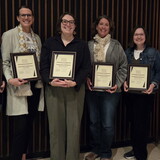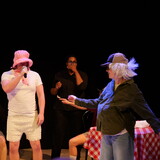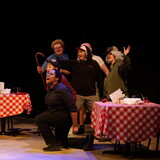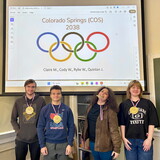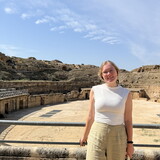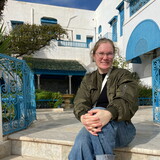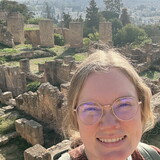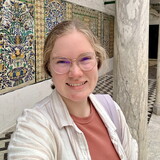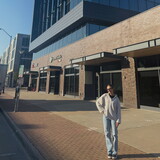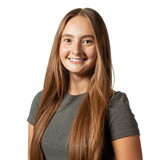On a cold, dreary fall day students from two Nebraska Wesleyan classes spent their afternoon on a spacious meeting room floor tying hundreds of fleece knots.
Knot by knot they slowly turned the fleece fabric into warm blankets that would soon be donated to a nearby shelter for abused women and children.
But this wasn’t your ordinary service project.
Sitting alongside the NWU students —many of whom were raised in predominantly Christian faiths — were students from area colleges and universities who represented Jewish and Muslim faiths.
“Indeed we were tying fleece together to create blankets for Friendship Home,” said Chloe Petit, a NWU sophomore from Houston, Texas. “In my mind, this symbolizes the tying of friendships together and the making of a safe space where we can sit and talk about anything.”
That was the goal of NWU communication professors Rachel Droogsma and Patty Hawk. This fall, Droogsma taught a liberal arts seminar for first-year students called “Better Together.” The seminar focused on interfaith communication using the Interfaith Youth Core model. Students learned about the shared value of service in diverse faith traditions, read a book on interfaith action authored by Eboo Patel, the founder and executive director of the Interfaith Youth Core, and researched Seventh Day Adventism, Judaism and Islam.
Meanwhile, students enrolled in Hawk’s upper-level communication course on dialogue were learning how to break down barriers by using effective dialogue.
The two classes collaborated on several projects: they facilitated small-group discussions at this year’s Visions & Ventures Symposium, and they participated in an intensive interfaith dialogue training led by Usra Ghazi, an Interfaith Youth Core trainer.
In November, the two classes reunited again when Patel made a visit to campus to deliver the University’s Curtis Lecture on Public Leadership. Patel wanted to learn more about what these two classes were doing to address religious diversity.
Patel told students that religious diversity often leads to conflict, and oftentimes people are more likely to point out what’s wrong with someone else’s religion rather than what’s right, or they avoid discussing religion at all.
“The challenge is how to talk about religion especially with people of other religions,” said Patel. “Religious diversity should lead to something other than conflict. We want a society in which people’s differences are embraced while working toward a common good."
So knot by knot the students took Patel’s advice to heart. Together the NWU students and their new friends from Jewish and Muslim faiths tied more than 50 fleece blankets.
“Since all faith traditions call their members to serve, community service has the power to bring together people who may not normally communicate with another,” said Droogsma, who taught the “Better Together” class for the first time at NWU. “It provides them with a shared experience and lays the groundwork for greater understanding across religious and non-religious groups.”
Just days after the blanket-making, those same students gathered again and volunteered at homeless shelters in Lincoln. Following the service projects, they held dialogues about their experiences.
“It showed me how easy it can be to communicate with people who don’t share the same view as you,” said first-year student Christina Woodward-Svoboda of Elkhorn.
“I hope that what we started here will be continued,” said first-year student Jennifer Heywood of Lincoln. “We can keep breaking down barriers between religions, building friendships and being better together.”
Which is exactly the lesson Droogsma was hoping her students learned.
“I think there were a number of ah-ha moments,” she said. “If you look at all of the problems of the world and we could work through them together, what a better place it would be.”




